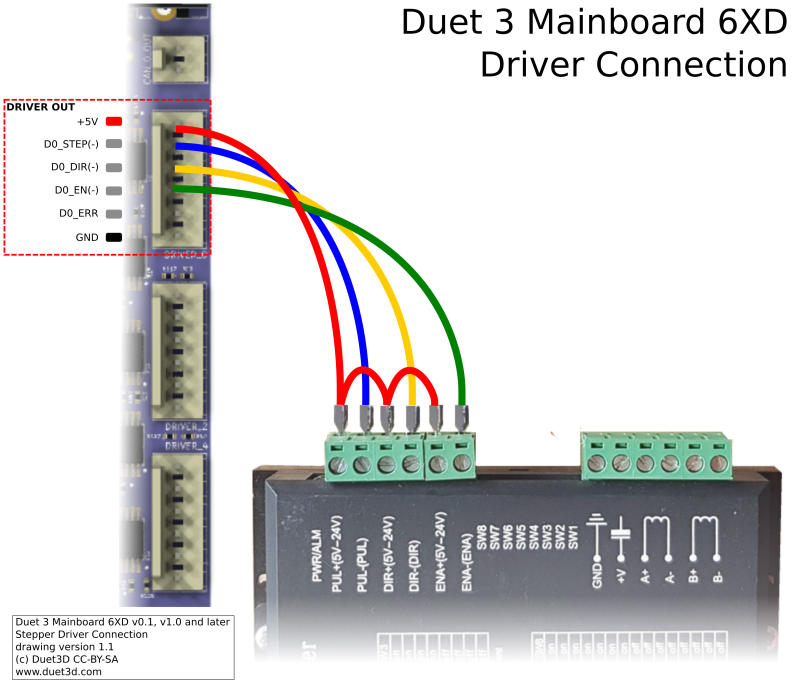Advise for wiring step/dir signals over long distance (4m)
-
I got my hands on some iCLD57-21 integrated closed loop stepper motors. I would like to use them in a BigrepONE printer that I am upgrading to a Duet 6XD. The longest signal path would be around 3-4m in length. Hence, I am looking for advice on good practice and maybe some tips and tricks to avoid signal distortion.
The Duet 6XD does not support differential signal output, so I would go for single ended NPN. In the Wiki example, the +5V line is bridged at the Driver side.

I was wondering if bridging +5V at the duet side and running twisted pairs of +5V/ Step- and +5V/Dir- to the motor would improve the signal quality. I have also read that longer signal pulses can improve the signal quality, especially with long cables. What would be the best practice here? Set longer step pulse timings until the maximum desired speed of the axis is no longer reached, and back up from there?
-
@MaxGyver that sounds a good plan to me, and AFAIR twisted pair is recommended by Clearpath with their servos when the distances are long. The latest revision 6XD provides active pullup which also helps with long lines.
-
you could use a 3state inverting line driver to generate a rough differential signal, then convert it back to single ended at the end with something like defined here. https://www.analog.com/media/en/technical-documentation/application-notes/an78fs.pdf
but might not be worth the effort, and using shielded twisted pair probably easiest.
-
Thank you both for your feedback.
I have some more questions:- Are the duet driver outputs ESD protected, or would it be advisable to add TVS diodes?
- How, and where, should I ground the cable shield?
-To the case/earth?
-As close as possible to Duet?
-I have read that the shield can be grounded to the electronics GND with a capacitor in between shield and GND?
-
@MaxGyver I would use unshielded twisted pair in that situation because it has lower capacitance. If you use shielded, I suggest you connect the shield to Duet ground and leave it unconnected at the driver end of the cable.
Additional ESD protection should not be required.